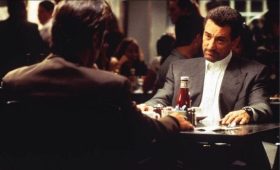We’ve trawled back through every book ArtsHub has covered this year to present you with the titles that most impressed our reviewers. The list is eclectic, and includes YA, literary and crime fiction, as well as essays, memoir and National Geographic photos.
Daisy & Woolf by Michelle Cahill
Michelle Cahill’s novel revisits a classic and tells the story of Daisy Simmons, a marginalised character in Virginia Woolf’s Mrs Dalloway (1925). Exploring gender, race and class in colonial India that’s interwoven with a contemporary narrative, the book is multilayered and ambitious.
Intan Paramaditha said: ‘Daisy & Woolf is a critical yet playful dialogue between women writers of colour – Mina the protagonist and Michelle Cahill the novelist – and Virginia Woolf, the admired writer and feminist who has marginalised a woman of colour, Daisy Simmons, in her novel.’
Denizen by James McKenzie Watson
Denizen took out the 2021 Penguin Literary Prize and it seems like it was a worthy winner. Moving back and forth in time, the book tracks the troubled life of Parker, from child to adulthood. Set in rural NSW, this bush noir canvasses mental health, self-destruction and the parent-child relationship, among other topics.
Erich Mayer said: ‘Denizen is not a horror story but it reveals horrors. Denizen is not a thriller but it has you on tenterhooks as you turn the pages wandering what is going to happen next. Denizen is not a cry for help but shows what can happen when much needed help is unavailable.’
The Novel Project by Graeme Simsion
The best-selling author of the Rosie series, Graeme Simsion’s latest book draws on his personal experience to help others craft their novel, memoir or biography. It’s a masterclass about writing that newbies, in particular, will find helpful.
Sarah Halfpenny said: ‘Simsion is at pains to make sure his readers know that although he presents the writing of a novel as a highly-structured practice, any of the steps can be modified to suit one’s preferences. He often reminds readers they’re free to break with convention, but advises it to be conscious and informed. He encourages the exploration of all structure options before embracing the freedom to write it your way: confidence backed by knowledge.’
A History of Dreams by Jane Rawson
In 1930s Adelaide, four women turn to witchcraft to challenge a new fascist and patriarchal government that is determined to have them married, uneducated and house-bound.
Annabel Harz said: ‘The prose gambols across the page, frolicking through the narrative and dancing in delight with the joy of diverse sentence structures. Even the darkest sections convey characteristic underlying wit, which alleviates the gloom: some spells are hilarious.’
We’ve Got This: Stories by Disabled Parents, edited by Eliza Hull
An anthology written by parents with disabilities, the book explores how they deal with physical, attitudinal and social barriers.
Erin Stewart said: ‘We’ve Got This attests to the capacities of disabled parents and to the joys of parenting in an authentic way, without being saccharine or skirting over discrimination or other difficulties. It is an encouraging collection that showcases creativity; and provides sadly necessary affirmation that disabled people can and do grow up to be loving, capable parents.’
The Burnished Sun, by Mirandi Riwoe
Riwoe’s latest book attends to the voices of those wilfully neglected or little heard. The Burnished Sun is a collection of tales that reconfigure the lives of women from a feminist perspective. Witness for instance the story of Annah, who was Paul Gauguin’s maid, model and lover. Elsewhere Riwoe reimagines the sad history of a minor throwaway character in a W Somerset Maugham short story.
I said: ‘Riwoe’s prose is poetic and lyrical; there’s a vibrant life force in all her characters, regardless of how fraught their experiences. With their rich evocation of time and place her narratives, that roam across continents, are such that each story demands attention to the end.’
Waypoints, by Adam Ouston
Ouston’s beguiling debut novel explores love, loss and the obsessive recreation of the first flight on Australian soil by the great escape artist, Harry Houdini.
Erich Mayer said: ‘This is a brilliant work that allows the reader to effortlessly share and understand the emotions and preoccupations of its hero. It is a masterpiece of storytelling with a captivating and delicate touch. It conveys a deep sense of loss without imposing misery. It deals with serious matters like obsession and the overload of information, but doesn’t lose its sense of humour. It is erudite without a trace of snobbishness. It is a great novel.’
Unnecessary Drama by Nina Kenwood
First year university student Brooke tries (and inevitably fails) to live under these three rules in a share house: no pets, no romance and no unnecessary drama.
Jemimah Brewster said: ‘Kenwood has found the ideal balance in tone between light-hearted and joyful, anxious and real, heart-warming and hopeful, and of course everything all turns out well in the end. This is a fun and deeply enjoyable YA rom-com about moving out and growing up, with a sweet enemies-to-lovers arc alongside the coming of age as a young adult plot.’
Desi Girl: On feminism, race, faith and belonging, by Sarah Malik
This memoir-style collection of essays tracks the first-generation migrant experience of Sarah Malik, a Pakistani-Australian teenager growing up in western Sydney.
Megan Payne said: ‘Perhaps it’s her journalist experience that makes her writing so informative and generous. As a Muslim woman growing up in Australia, Malik offers a vital perspective regarding feminism, race, faith and belonging.’
The Torrent, by Dinuka McKenzie
Heavily pregnant (and one week away from maternity leave) Detective Sergeant Kate Miles finds herself embroiled in a couple of complicated cases that will ensure her remaining days will be anything but quiet.
Craig Buchanan said: ‘Anyone picking up this novel in the expectation of reading a debut publication runs the risk of being seriously disappointed, however. The Torrent reads like the work of a well-established author of long standing, and will inevitably leave its readers with one annoyingly unscratchable itch – the urge to read the many preceding volumes, which, sadly, don’t exist, at least as yet.’
How We Love, by Clementine Ford
A memoir about love in all its permutations and combinations: platonic, maternal, romantic as well as self-regard.
Vanessa Francesca said: ‘In How We Love, Ford has produced a collection of personal essays that show the need for self-compassion for the little girl inside the feisty woman. Whether it’s memorialising the cost of Tencel jeans in ‘The Queen of Cool’ or negotiating the dilemmas of a teenager on the threshold of adulthood in ‘Sweetie’, How We Love demonstrates with humour and verve the liminal spaces between childhood and adulthood, and how they need to be treated with special care.’
The Furies, by Mandy Beaumont
In outback Queensland, a young abattoir worker, Cynthia, is grieving the loss of her sister, Mallory. Bit by bloody bit, their back stories are revealed. This is a dark and visceral novel that’s heightened by Beaumont’s poetic prose.
Nanci Nott said: ‘Falling under the wide umbrella of contemporary Australian fiction, The Furies contains elements of paranormal and gothic horror, particularly in its dialectic of life and death. Beaumont’s descriptions of the punishment of women for not being men, and the punishment of women for men being men, and the punishment of women for nothing at all, are brutal, sensory and exquisite. This book is a battle cry of being and becoming, of legacy and revolution.’
Hilda: The Life of Hilda Rix Nicholas, by Richard Travers
Australian artist Hilda Rix Nicholas is probably not as well-known as she should be; this biography makes a good case for her to be feted for her art.
Dr Diana Carroll said: ‘Hilda: The Life of Hilda Rix Nicholas really is a superb example of the artist monograph. It is diligently researched, intelligently written, thoughtfully designed and beautifully illustrated. Author Richard Travers makes a good case for his subject, the painter Hilda Rix Nicholas, to be accorded the status of “icon of 20th century Australian art”.’
Everyone in My Family Has Killed Someone, by Benjamin Stevenson
This book begins: ‘Everyone in my family has killed someone. Some of us, the high achievers, have killed more than once.’ It’s a self-referential and playfully fun novel that indulges in and perverts the usual tropes of crime fiction.
Erich Mayer said: ‘Run, do not walk, to buy your copy though, because HBO has already seen the potential in Everyone in My Family Has Killed Someone, and has snapped it up for serialisation. That’s great news for Stevenson, and great news for HBO’s ratings, but it begs the question, do you want to be the person who misses out on the murder mystery release of the year, and settles for watching the adaptation – however good it may be – on the small screen? And that, my friends, is no mystery at all.’
Read: 10 underrated books in 2022
Icebergs to Iguanas, by Jason Edwards
A combination of National Geographic images and behind-the-scenes stories from the photographer’s field journals, this is the first volume in a planned series.
Vicki Renner said: ‘To say this book is beautiful is to undersell its depth, its reach, its courage and its power. Mirroring our tumultuous world, Icebergs to Iguanas will challenge and change you, and it has it all: oceans, rivers, coral cliffs, mountaintops, lush rainforests, ancient traditions, human interactions with nature, endangered species, some of humanity’s greatest art and so many animals, insects, amphibians and birds.’





